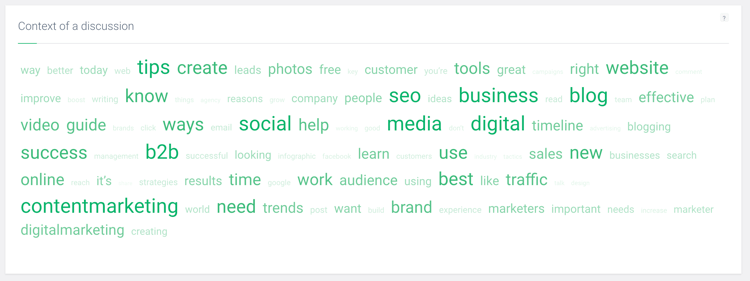How to Conduct a Brand Audit? The 5 Step Guide [2022]
The brand audit is a process of assessing your brand’s current position on the market. The brand audit allows you to spot strengths and opportunities and compare your company to your competitors. The process provides you with a health check of your company. As a result, you will get a list of actionable insights you can implement to boost your company’s overall results.
By conducting a brand audit, you can get a lot of information that will help you develop a more effective brand strategy. The purpose of a brand audit is:
- Determine your position in the market and develop improvement strategies
- Explore the expectations of your customers and align your product or service accordingly
- Assess your social media presence and discover the best channels for your activity
- Conduct a health check of your brand
- Perform a SWOT analysis and discover the strengths and weaknesses of your business
- Analyze the sentiment your brand is generating among its target customers
An external agency can perform a brand audit for you. Also, you can do the audit of your own brand by yourself. In this article, I will provide a comprehensive 5 step guide.
- What is a brand audit?
- Why conduct a brand audit?
- How to conduct a brand audit process?
- The benefits of brand audit
What is a brand audit?
A brand audit is a process of examining your position in the market, comparing it to your competitors, and assessing the effectiveness of your overall business strategy.
A brand audit helps you identify your target market, build customer loyalty by producing products and services tailored to their needs, and ultimately, increase the return on investment for your business.
While conducting an audit, you first take a look at the situation within your company. You take a closer look at your branding and brand values.
You analyze its strengths and weaknesses. A brand audit discloses how your customers feel about your company, how your company compares to your competitors, and how it performs generally.
An audit will help you conduct the SWOT analysis and determine the direction in which your company should develop. The process can help keep you on track and consequently grow your business.
Brand24 is a social listening tool that will help you conduct a brand audit!
Why conduct a brand audit?
At the first glance, a brand audit might seem like an unnecessary process. The amount of data you need to analyze is huge, as you need to take a deeper look at different aspects of your brand presence, both off- and online.
A brand audit is necessary for building a strong brand. Strong brands make more money and are more immune to crisis. A robust brand has higher brand awareness levels which directly translates into higher sales and lower churn.
Brands with established positions on the market spend less money on attracting new customers. The rate of returning customers is also higher for healthy brands. People prefer brands they have a positive interaction with to their friends and families.
All of the aspects mentioned above are elements of a healthy brand. All of them will increase your bottom line and help you conquer your target market.
The first step to a healthy brand is a brand audit.
How to conduct a brand audit process?
If you want to conduct an audit, that will bring your actionable insights, you need a framework.
A brand audit consists of two parts — internal and external audit. You can conduct only one or combine both of them. Of course, integrating them will give you the most extensive view of your company, but it’s also a very time-consuming project. Also, we can divide a brand audit into branding components.
The internal part of a brand audit consists of examining:
- Your brand values
- Your culture
- Communication
While looking at the external part of your brand elements you should take a look at:
- Your website
- SEO
- Social media
- Events
- PR activities
- Content marketing
01 Create a framework
Before you gather data and start the analysis, you need to know which aspects of your business your brand audit will cover.
Do you want to focus on internal or external factors? Do you want to know how your company’s infrastructure is performing compared to its goals or are you mainly interested in how your competitors are doing?
Put all the information in one document. That way you have an overview of your current situation, and on goals, you want to achieve. The brand audit framework should also describe how you’ll tackle the problems that might arise.
It doesn’t have to be a formal document. You should choose the form that suits you best. I’m a bit of a control freak, and I love Excel tables, but mind-mapping or storyboarding is also a useful technique.
02 Examine web analytics
I can’t stress enough how important it is to examine your website analytics on a regular basis. We examine the data from our Google Analytics.
We do it every two weeks at Brand24, and we start with the origin of our traffic. The source is vital if you target specific geographical regions. If your traffic is coming from places you’re not interested in, you need to adjust your strategy.
When it comes to your website take a look at the bounce rate. A high bounce rate indicates that there’s something wrong with your site that makes people go away quickly.
Another essential part of website analytics is conversion rate. We discuss the effects of our content marketing strategies during our status meetings, so we know which content is the most valuable to our readers, and we adjust our action plan.
Analyze the channels that drive traffic to your website. It’s essential to diversify the sources of your traffic so you’ll be immune to sudden changes in algorithms and drops in social reach.
03 Talk to your target customers
Your customers are a goldmine of knowledge. After all, who knows better about the good and the bad aspects of your product?
There’re plenty of possibilities to get the information you need. You can run a poll, conduct online or email surveys, or ask questions by phone. The qualitative evidence you’ll gather will be a great addition to all the hard data. It’ll give you answers you can’t find in the metrics, such as the satisfaction rate of customer service experience or why people choose your brand over your competition.
Have you ever heard about the mystery shopper technique? An employee in disguise comes to a brick-and-mortar store to assess how customers are treated. You can implement a similar approach to the brand audit of your online business. A random group of testers could check the usability and performance of your site and provide feedback. If you put yourself in customers’ shoes, you get a chance to spot all the glitches and bugs on your webpage.
Don’t forget about other critical factors such as security and privacy settings, ease of data import/export, or website’s general performance (there’s nothing more annoying than an unresponsive website due to a server crash).
Use the Brand24 tool to run a brand audit and discover what customers say about your company!
04 Look at sales data
Analyzing the customers’ funnel can indicate specific areas that discourage your clients from purchasing. You’ll be able to solve the problems in advance to ensure a smooth customer experience. We had a similar problem at Brand24 and Mike can tell you how we dealt with it.
Last year, our primary challenge was a drop in sales within a global version of Brand24. A lot of customers were bouncing back from our “Pick a plan” page, and we had no idea why. We couldn’t figure out what the problem was, but thanks to little help from Paweł Tkaczyk, we found the solution.
It turned out we used a strikethrough font to show features that are missing in lower plans. Do you know any business that is promoting their products by stressing the lack of features? Yeah, me neither. We removed the “missing features”, and conversions went up.
05 Look at social data
Social data is the cherry on top of your brand audit. It gives you access to customers’ insights about your product that is unavailable through other sources.
Collecting all the data has never been easier. With a media monitoring tool, for example, Brand24, all the data necessary for conducting a brand audit is at your fingertips.
Start with creating a project. In the project creation wizard choose the keywords you would like to monitor. It can be the name of your company, an official hashtag you use, or the name of your specific product or service.
If you need any help with setting up your account, our customer service heroes will be more than happy to help you.
Once you choose the relevant keywords, click on Next and Brand24 will start collecting all the mentions with your predefined keywords. Internet monitoring tools, in general, don’t provide historical data.

The context of a discussion
Brand24 also offers a lot of helpful analytics tools. When it comes to brand audit strategy, the context of a discussion is particularly important.
You can examine the context in which people mention your keywords and discover associations customers have with your brand. Take a look at the context of the discussion in our analysis tab – it shows all the words that appear in connection with your monitored keyword(s).

Sentiment
One of my favorite features is sentiment analysis. It gives you an overview of public opinion around your brand, campaign, or product. Moreover, you’ll know in an instant which features stole your audience’s hearts and on which you should work some more.
Brand24, by default, shows all kinds of mentions (positive, negative, or neutral). If you want to analyze only negative or positive remarks for your brand audit (knowing what your competitive advantage is, is vital!), just move the slider.
This is an example of a negative mention.

And this is a positive one.

Sentiment analysis will help you determine whether your clients are happy with the changes you implemented after the brand audit.
Identify influencers
Social media listening can help you find your brand’s influencers – people who can add value to your marketing campaigns. In Brand24’s dashboard, you’ll see right away who is linking to your website and what’s their influencers’ score.

You might think that influencer marketing shouldn’t be a part of your brand audit process. But how you communicate your product or service is an integral part of the brand audit framework.
Knowing who is talking about your brand, what exactly are they saying, and how it resonates with your audience is a vital part of a brand assessment.
Monitor your competition
Internet monitoring can also be a useful tool for examining your competitors. You can set up separate projects for your main adversaries and monitor what their customers are saying on the Internet. Spot and fill the gaps in customer experience to gain loyal clients.
You will be able to determine on which social platforms they are present and whether they’ve launched a new marketing campaign.
Set up the Brand24 tool and conduct an audit of any brand!
The benefits of brand audit
A brand audit has many benefits. It should deliver a set of actionable insights that can directly improve your bottom line.
The outputs of a brand audit typically include:
- Data to measure and increase brand awareness and possible tweaks you need to make
- Improved marketing communications tactics
- Provided guidelines for future brand development
- Growing the overall value of your company by implementing recommendations based on a robust set of data
- Insights on your brand positioning, brand architecture, and business structure
- The incentive to brand refresh for example through new visual identity
- Detecting target audience thoughts and increasing customer satisfaction
- Finding real unique selling proposition and brand’s strengths
The outcome of a successful brand audit should be a plan of action that will highlight the areas for improvement. The program should specify the goals you want to achieve and a timeline of expected results.
The brand audit is a useful technique to stay up-to-date and ahead of your competition. It will provide you with information pertinent to your business. The landscape we operate in is constantly changing, that’s why it’s vital to make it a continuous process.
Brand audit results will give you valuable insight to build a strong marketing plan. To do that, try the Brand24 tool! The first 14 days are for free!


![How To Do a Social Media Audit [9 Easy Steps]](png/5_a-step-by-step-guide-to-social-media-audit-640x300.png)


